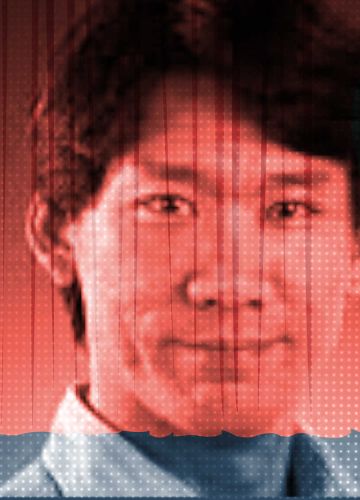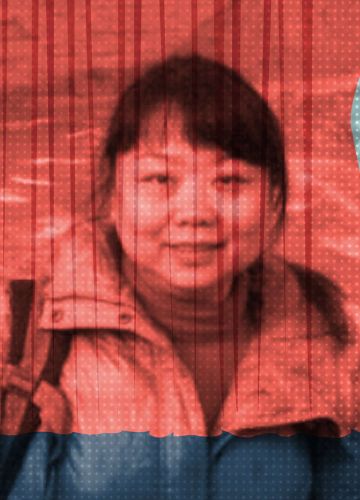A Feminist Odyssey

Dalia Parete

Lü Pin
Lü Pin began her involvement in women’s rights in the 1990s, as a new generation of women’s activism was bubbling in the wake of the United Nations Fourth World Conference on Women, held in Beijing in September 1995. Then a recent graduate of Shandong University, she was working as a journalist for China Women’s News (中国妇女报), the official publication of the All-China Women’s Federation or ACWF (中华全国妇女联合会), a Communist Party-affiliated “mass organization.”
After a decade at the paper, Lü set off on her own to found Feminist Voices (女权之声), an independent outlet based on Weibo and WeChat. Also known in English as Women’s Voice, it advocated for women and offered a support network for this new generation of activists, helping them analyze and discuss feminist issues. The online platform was permanently shut down by the authorities in 2018, by which point Lü was continuing her writing and activism from the United States, fearing harassment for her work in China. Now pursuing a PhD at Rutgers University, Lü Pin’s passion for advocacy and activism has never faded. She continues to moderate the Facebook group Free Chinese Feminists, where she shares news and updates on the state of women’s rights in China.
Last month, CMP’s Dalia Parete sat down with Lü Pin to discuss her journey as a feminist and the ways women’s issues are portrayed in China today.
Dalia Parete: I know you’ve been engaged with women’s issues and feminism in China for many years, but perhaps you could start by telling us how you first became interested in, or concerned about these issues. What got you involved?
Lü Pin: In 1994, after graduating from university, I was offered a job as a reporter at the China Women’s News. At that time, I had not been exposed to feminism and had little interest in women’s issues. Knowing nothing about feminism, I became exposed to women’s issues through my work at a time when preparations for the upcoming Fourth World Conference on Women in Beijing were in full swing. I attended the NGO Forum at the Fourth World Conference on Women in 1995 as a reporter and was greatly impressed by the fervent feminist spirit and the diverse range of issues discussed by participants from all over the world.
The year following that conference, a few of my colleagues and some gender scholars founded a volunteer group dedicated to media and gender equality, though I was not actively involved with this group until about 1998. Around International Women’s Day that year, I participated in a gender awareness training session organized by a colleague along with other female journalists. During an icebreaker activity when asked, “Who are you?” I responded with “a journalist.” The facilitator showed her response to the same question as “a female journalist.” This experience was among my earliest realizations that incorporating a gender perspective into my work was not only possible but could also make a significant difference.
Two issues that initially caught my attention were gender bias in mass media and domestic violence against women. As a result, my colleagues and I, in collaboration with some gender studies scholars, formed a writing group and established a column in China Women’s News. This column, which ran for about three years, focused on critiquing the prevalent issues within the mass media at the time, specifically how the media discriminated against, demeaned, and ignored women in various aspects.
My engagement with the issue of domestic violence also began through the media, by raising awareness among media workers and enhancing the media coverage of domestic violence issues. Starting in 2002, I led a program that organized seminars and training sessions for journalists in Beijing and other cities, invited them to cover advocacy activities, and facilitated the creation of a guide for reporting on domestic violence. In 2003, I distributed press releases on proposed legislation for the Law Against Domestic Violence to journalists at the “Two Sessions,” which was finally enacted in 2016 after more than a decade of collaborative efforts.
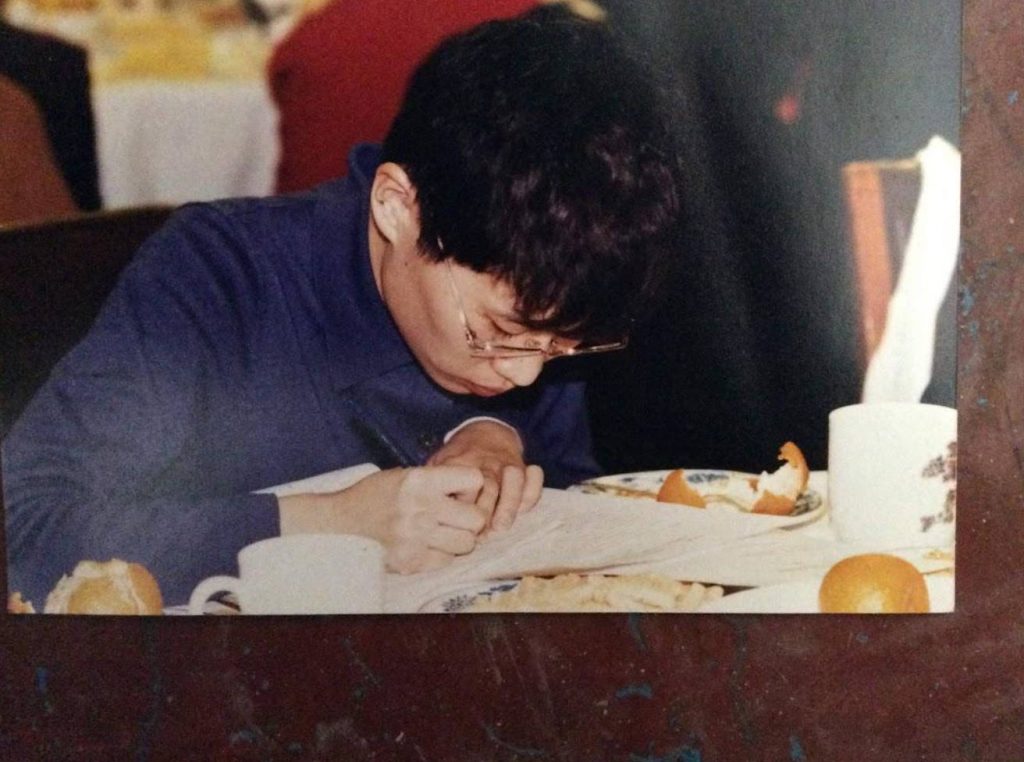
DP: Earlier in your career, you worked as a reporter for China Women’s News, which is a state-affiliated publication. What was that experience like? How was it possible, and maybe not possible, to talk about the issues that concerned you?
LP: I worked for China Women’s News for a total of ten years, from 1994 to 2004. The newspaper is directly controlled by the Party, but it is almost the least important newspaper of the Party’s national propaganda system. The newspaper’s motto was “to publicize women to society, to publicize society to women,” implying that it struggles with the marginalization of the women’s issues it advocated within the dominant ideology. While working at the newspaper, I did a lot of propaganda work that I was instructed to do, much of which I didn’t realize was problematic at the time.
For instance, during the so-called enterprise reform, many women were forcibly dismissed and left without social protection. However, the newspaper portrayed the unemployment issue as a result of women’s “low quality” and promoted the notion that women should “stand on their own feet” as a solution to the problem.
At the same time, the newspapers’ advocacy for gender equality has led to a critical examination of women’s rights issues, including violence against women and gender discrimination in the family, education, and the workplace. This also opened up the newspapers to engage with the activities of women’s organizations and to consider the perspectives of feminist scholars on several issues, fostering a more inclusive and informed discussion on women’s rights. I am most grateful for the exposure to feminism and civil women’s organizations during the ten years I worked for the newspaper.
I did not have many real readers because China Women’s News, like other state-affiliated newspapers, has never been marketed to the broader public.
A fact that might not be known to many is that media directly affiliated with the state at the time allowed journalists considerable autonomy, as they did not strictly regulate the content beyond the bottom line of not overstepping red lines and fulfilling the propaganda tasks entrusted to them by the state. Although I diligently wrote many reports about women’s rights and gender issues, I did not have many real readers because China Women’s News, like other state-affiliated newspapers, has never been marketed to the broader public.
Nor was there any reward for excellence or hard work within the newspaper. My experience has taught me that the rigidity and staleness of content in state-affiliated media outlets are not solely due to censorship and propaganda. A considerable factor is also their lack of competition in the marketplace, although marketization does not necessarily imply an increased interest in gender equality. Ultimately, it was the demoralization and sense of meaninglessness in the work environment that led me to leave China Women’s News after ten years of working for it.
DP: Drawing on your experience in the media sphere and also as an activist, how would you assess reporting in China today on women’s issues? And what would you like to see?
LP: This is a big question. Simply put, we should dynamically assess media coverage of women’s issues in light of changes in both China’s socio-political environment and its media ecology. I’m also viewing it from a feminist activist’s perspective. In the era when marketized traditional media replaced state-affiliated media as the major public agenda setters, the problem continued to be mainly the marginalization of women and gender issues, characterized more by the virtual absence of references to them rather than overt manifestations of discrimination and symbolic exploitation.
When marketized media replaced state-affiliated media as the major public agenda setters, the problem continued to be the marginalization of women and gender issues.
For a period, I did observe a quantitative increase in mass media coverage of women’s rights claims, although it remained limited in overall proportion. The reason for this surge was that the media at the time was drawn to the controversial advocacy approaches adopted by feminists. However, as the feminist movement faced increasing repression in 2015 and the political environment in China tightened, it became difficult for mass media to spotlight feminist advocacy.
The rise of the feminist movement, against the odds of repression, nevertheless introduced a new variable: the opportunity and possibility for the mass media to communicate feminist claims when they become very prominent. In the boom period of the #MeToo movement, which began in 2018, there was a lot of effort by the media to report, with those media reporters consciously viewing their reporting as supportive of the movement and as a form of defiance against censorship. Despite many reports not making it to the presses and others being deleted later, the media coverage significantly fueled the #MeToo movement’s efforts to raise public awareness. Additionally, the media’s shift to the Internet has facilitated more comprehensive coverage of gender issues, allowing for representation in lengthy and multimedia formats.
As feminism becomes further politically stigmatized and the media faces increasing restrictions against investigating controversial issues, the gender perspective in news coverage is diminishing, appearing only occasionally and subtly in “non-fiction” stories. In the cases of gender-based violence that attracted a great deal of concern since 2022, such as the case of the chained women, the media was powerless to reveal the truth, and to a considerable extent was only able to convey the official narrative frame. In China’s context, media coverage of women’s issues is increasingly becoming a matter of what reporting is permitted — that is, a question of freedom of expression.
In fact, I’m fairly certain that covering women’s issues would be greatly in the media’s interest at this time. Women’s rights are arguably one of the hottest topics in China, and yet both the amount and depth of media coverage in this area are simply not commensurate with the needs of audiences. I’m not suggesting that easing censorship would fully resolve gender inequality in the media, but rather it’s no longer realistic to discuss improving media coverage when heavy censorship has significantly curtailed the autonomy of media reporting.
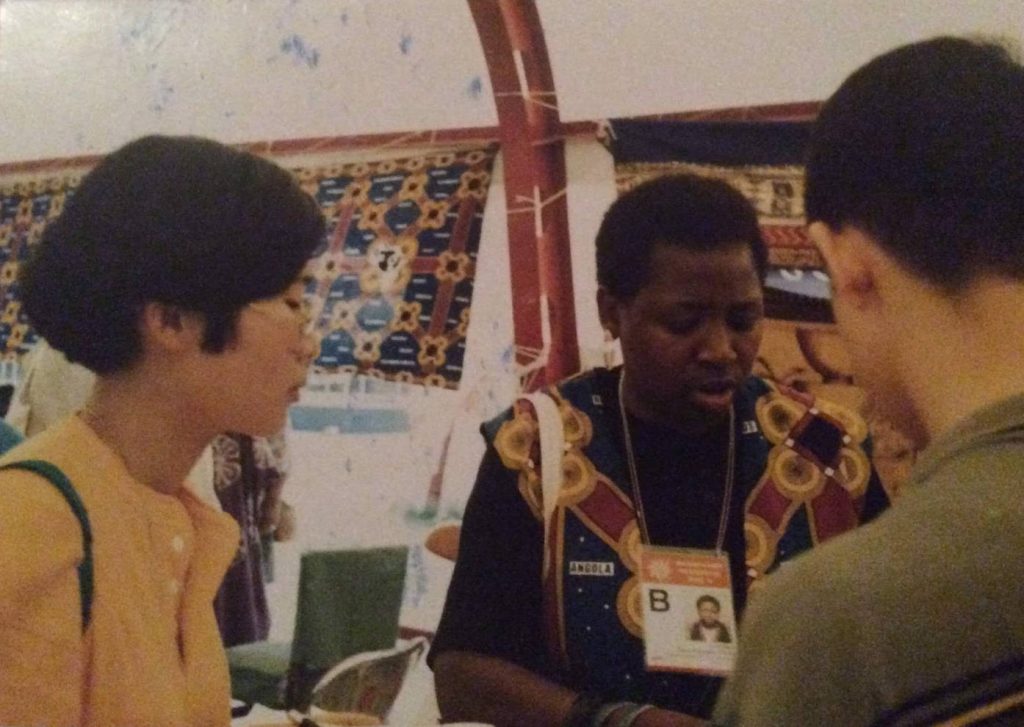
DP: I wonder if we could turn to your work at Feminist Voices. What was the idea behind starting this project?
LP: My motivation for founding Feminist Voices in 2009 was as much about dissatisfaction with the mass media as it was with the feminist movement back then. Rather than negotiating with mass media workers to encourage more focus on women’s issues, I opted for a more efficient strategy: directly disseminating the feminist perspective through alternative media. I also aimed to reorganize the feminist movement by engaging with the general public beyond the confines of feminist circles dominated by the intellectual elite.
It was a period when civil society was burgeoning in China, and I was driven by a strong desire to ensure that the feminist movement did not become disconnected or marginalized. In the years after having the idea to create an alternative media outlet, I lacked the resources to make it real. All I managed to do was establish a feminist blog on my personal MSN account, which has been discontinued. That blog received up to 2,000 hits per post before being banned before the 2008 Olympics. So, when I finally secured a bit of funding to create Feminist Voices, I had confidence that it was going to work.
For the first two years of Feminist Voices, I was the only part-time employee and handled everything. Almost all weeks, I distributed a Word file containing several original articles through an e-mail group I managed, which had over a thousand members — perhaps almost all the active feminists around the country at that time.
I would also upload some important articles to social media. Weibo had not been launched yet, but there was Kaixin and Douban. The highest number of reads I received on a single post was 20,000, and almost every week I received enthusiastic feedback telling me how my articles inspired them and suggesting topics they would like me to discuss. From such feedback, I recognized that there were already some very passionate young feminists in China who were eager to take action. The alliance between Feminist Voices and these young people contributed to opening up an era of greater popularization and politicization of the feminist movement in China. The main point of recalling this history may be to highlight the great potential that media and communication may contribute to social change.
Feminist Voices was banned long ago but today numerous other feminist alternative media outlets are currently active in China. Many of them lack a large following and are highly vulnerable to suspension due to exhaustion and censorship, but they collectively form a vast network of feminist communication that tenaciously remains the community base of feminism. There may be only a few at the vanguard of a movement, but the resilience of the movement is something that countless people unite to hold onto.
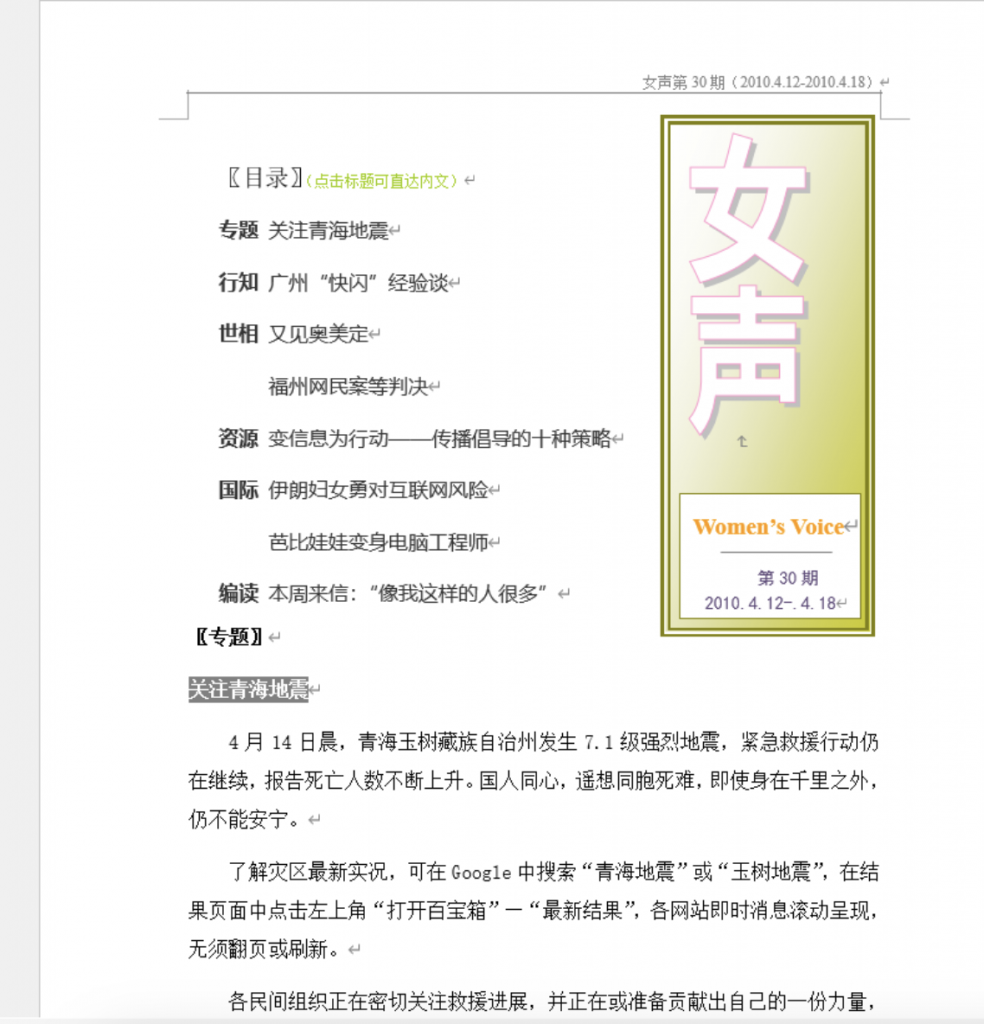
DP: In 2018, while you were living in America, the #MeToo movement surged in China. How did you see the movement?
LP: The rise and growth of the #MeToo movement demonstrates the adaptive resilience of the feminist movement. The “Feminist Five” case, in which five feminists were arrested and detained for organizing an anti-sexual harassment action, occurred in March-April 2015. It underscored the government’s deterrence against the organizing of high-profile women’s rights advocacy. However, despite the shrinking and going semi-underground nature of core feminist activist groups, the reach of the feminist movement expanded dramatically through the internet, fostering active public debate on various topics. The #MeToo movement represented another phase in the feminist movement’s evolution, led by a generation of young feminists who centered their activism around issues rooted in their own gendered experiences, and a more spontaneous and decentralized approach to mobilization.
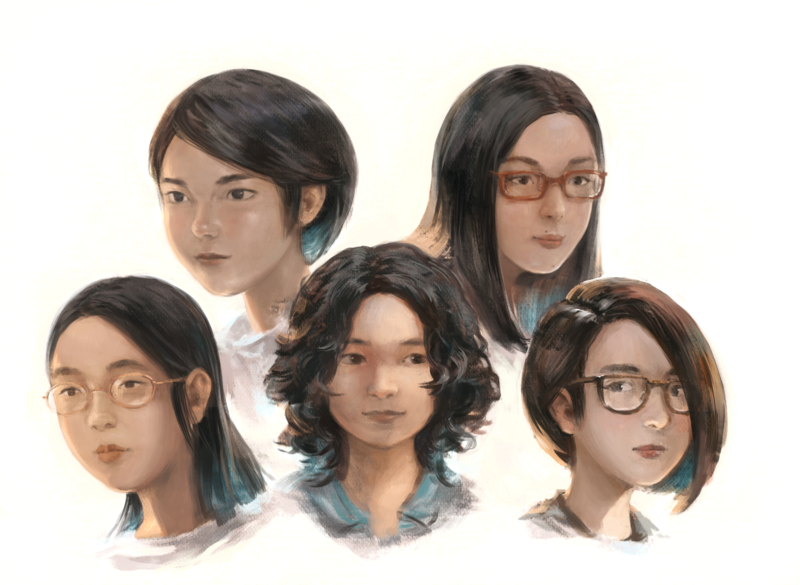
#MeToo highlights the remarkable courage and vitality that feminism can ignite, evident in its ability to break through censorship, shaking up society and amplifying women’s voices countless times for the last six years. But #MeToo could not halt the deteriorating political climate in China, resulting in waves of violence against its participants, including activists and survivors who came forward.
As collective action has become almost impossible, and as legal and institutional changes appear increasingly unlikely, the #MeToo movement, and indeed the feminist movement as a whole, increasingly shifts towards engaging in discursive debates surrounding culture, relationships, behavioral norms, and lifestyles as a means of adaptation. Certainly, discursive debates are crucial for effecting far-reaching social change, and the expansive feminist community fostered by the #MeToo movement in China stands as a significant bastion of resistance within the current Chinese landscape.
DP: What strategies do you think the feminist movement in China will employ to maintain its momentum and adapt to the evolving political climate, given the challenges it faces in terms of censorship?
LP: We know that censorship does not block all dissemination of information, but merely draws boundaries or raises the threshold for it. As a result, cases that achieve great emotional or moral mobilization can still be widely disseminated and evoke strong anger, while messages that do not directly resort to resistance may also still circulate. Of course, things have become so unpredictable and unstable that no one can confirm what would survive censorship. I mean, with regard to women’s rights, there’s still space for discussion within the Great Firewall (GWF) at the moment, but when it comes to building momentum for the movement, that’s really impossible to plan and anticipate.
Further, we have been witnessing a strategy become more prominent — namely, information backwash, which is spreading information into GFW from sites outside GFW. Yet there are no examples of the feminist movement being able to forge mobilization in this way, and this strategy is being risked by transnational repression. My own current interest is in the creation of insightful critical and activism-oriented knowledge that aims at the empowerment of the community. Keeping our members from being ignorant is essential to maintaining our movement in the long term and at the forefront.
DP: Finally, I’d like to ask about a term that has garnered significant attention in Western discussions of Chinese feminism — the concept of “leftover women” (剩女). This term, which refers to unmarried women over a certain age, has been widely discussed in Western media. Does it still significantly influence how women are portrayed in China? If so, how does it impact the broader discourse on women’s roles and expectations in Chinese society?
LP: A fundamental aspect of the severe patriarchal constraints faced by Chinese women is the demand for them to conform to gender-specific norms and fulfill gender-specific obligations, such as marrying and bearing children by a certain age.
I think one of the most prominent conflicts in China is that women have progressed but the state and society have not.
The term “leftover woman” functions as a stigmatizing label, symbolizing society’s denial of the dignity of women who deviate from expected gender behaviors and serving as a cautionary message to other women. On the other hand, the term has emerged precisely because more and more women are postponing marriage or even declaring that they will not marry. This phenomenon is a manifestation of women’s increased level of education and independence of livelihood, and also their increased awareness of women’s autonomy. In fact, I think one of the most prominent conflicts in China is that women have progressed but the state and society have not.
Today, if I am asked whether the term “leftover woman” still wields significant power to harm women demanding lifestyle freedom, my answer is not as much as it did 10 or 15 years ago. This is because more women today are resisting the imposition of patriarchal norms on them.
Indeed, one of the most prominent initiatives remaining in the current feminist movement is “no marriage and no childbearing to protect ourselves.” This radical attitude represents the cutting edge of the feminist debate on lifestyles.

Dalia Parete

